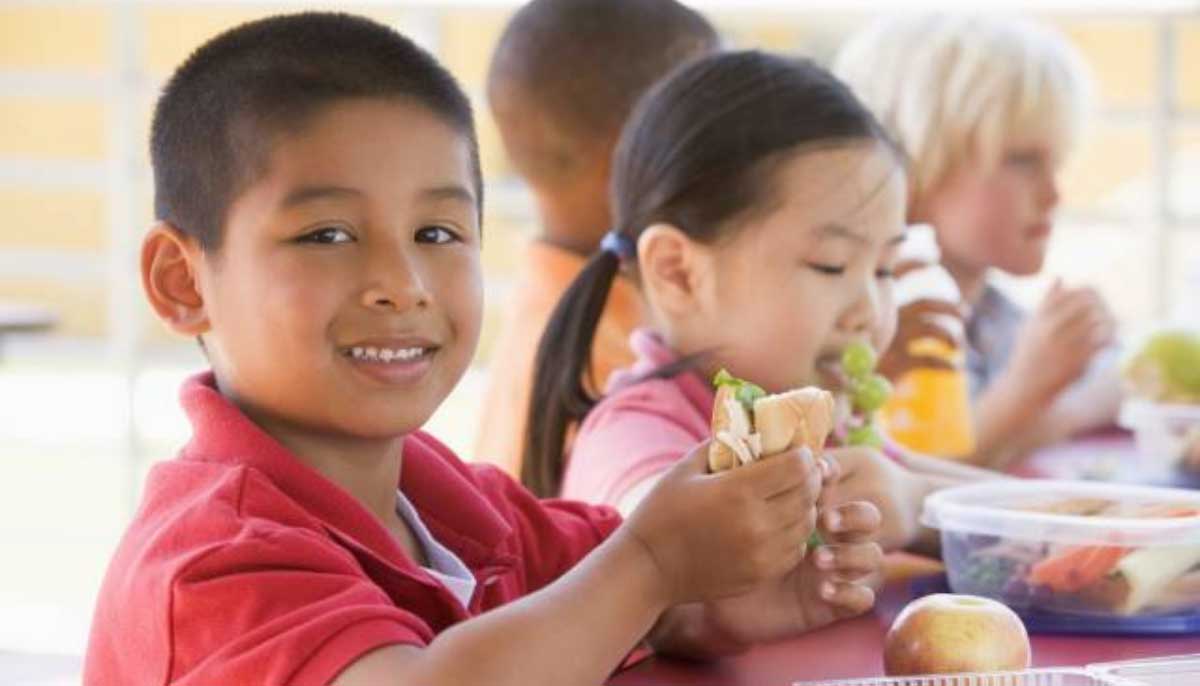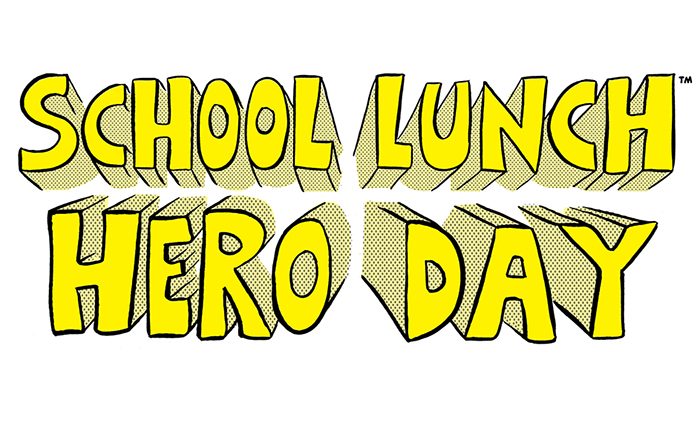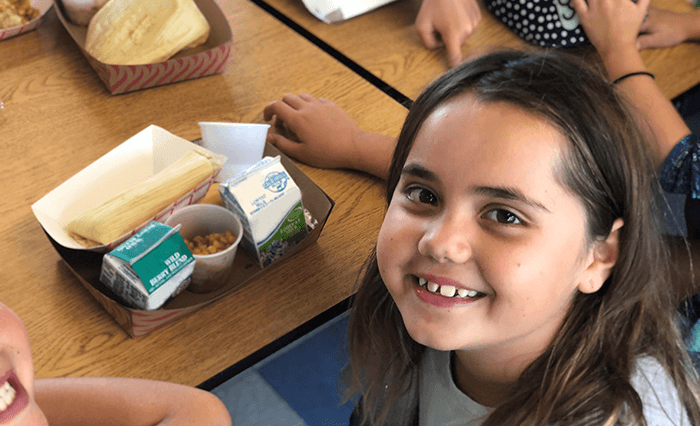By: Renée Farias

For nearly 75 years, the National School Lunch Program (NSLP) has played an important role in nourishing students across the U.S. by providing little to no cost meals daily. Administered by the United States Department of Agriculture (USDA), it is now the second largest food assistance program in the country, serving nearly 4.9 billion meals each year1, 2.
Every second week of October, school districts throughout the U.S. celebrate the important role school lunch programs play in nourishing students with National School Lunch Week (NSLW). During NSLW, school foodservice drives awareness to school lunches by coordinating special menus, decorations, nutrition education opportunities, student contests and more. Created in 1962 by President John F. Kennedy, NSLW aims to shed light on the positive impact nutritious meals have on children in and out of the classroom3.
This year, the School Nutrition Association’s theme for NSLW, which runs October 12-16, 2020, is Now Playing: School Lunch! and encourages school districts to spotlight popular menu items using a movie themed celebration. Beyond the celebratory festivities, the goal of NSLW is to increase student participation in the program and raise awareness on the nutritional quality of school meals by informing parents, teachers and administrators about the benefits of participation.
Honoring NSLW will require a different approach this year due to the COVID-19 pandemic, and school districts are finding creative ways to celebrate while keeping the school community safe. Elk Grove Unified, who currently offers curbside meal service, partnered with Dairy Council of California to provide students with fun incentives and MyPlate nutrition education worksheets to engage students' minds while nourishing their bodies. In addition, Nutrition Services will direct students and families to their district website, which provides students with access to nutrition games and supplemental nutrition enrichment resources.
School meals have improved significantly in nutritional standards, food preparation and presentation to reflect more wholesome meals. In my elementary days, I remember receiving plastic-like burgers, suspicious casseroles and unappetizing vegetable side dishes (wilted iceberg lettuce, anyone?). But the truth is, school meals have significantly evolved since schools implemented the Healthy Hunger Free Kids Act into dishes I would gladly eat! In my role as a Community Nutrition Adviser, I have had the opportunity to try school lunches throughout the central valley and have found them to be quite appealing and tasty. Innovative school menus items now include trendy and appealing food options like burrito bowls and orange chicken in addition to fresh salad bars.
School meals are not only tastier, they are also quite nutritious. In order for districts to receive reimbursement for meals served to students, meals must meet nutrition standards set by the Healthy, Hunger Free Kids Act of 2010. The updated regulations considerably improved the quality of school meals by offering healthier options including fresh fruit and vegetables and more whole grain foods4. According to the Act, school lunches must:
According to research from USDA, students eating school lunch have higher quality nutritional intakes in comparison to their peers who bring lunch from home6. Further, students who participate in school meal programs consume more fruits, vegetables and milk during meal times and have a superior intake of calcium and fiber, nutrients that are essential to achieving optimal health7.
Additionally, the benefits of school lunch extend beyond nutritional intake. Studies demonstrate that proper nourishment improves a student’s performance at school, behavior and cognitive development6. According to Anne Gaffney, RD, SNS and Nutrition Specialist for Elk Grove Unified School District, “A hungry child cannot learn, so whether there is a financial need, or to save time for busy families, school meals help students to be well nourished and ready to learn.”
For families experiencing food insecurity, this program provides easy access to a healthy meal that will help school-aged children succeed. Depending on the family’s income, a student may pay a price set by the school, a reduced cost (no more than 40 cents) or no cost at all. In 2019, 21.8 million free or reduced priced school lunches were served each day, accounting for more than 70% of total daily lunches served2. Every child deserves access to nutritious food and the NSLP provides an opportunity for nourishment for the most vulnerable populations.
The COVID-19 pandemic shows just how vital school meals are to nourishing students experiencing food insecurity and school foodservice professionals have been working throughout this pandemic to ensure every child has access to school meals. According to research from Feeding America, 20.9% of children in California are currently food insecure. Being the most populous state, California is projected to see the largest increase to the number of food insecure children in the nation, bringing the total to 2.2 million in 20208.
Undoubtedly, the school lunch program brings much needed aid to struggling families. School foodservice professionals, food access advocates and parents were certainly grateful when critical waivers were extended by the USDA to ensure free meals could continue to be easily provided to children through the 2020-2021 school year.
During this year’s NSLW, I reflect on the impact school meals have had on so many American children. School foodservice workers and nutrition program directors are heroes to students and families, and that has become more evident than ever during the past six months. The National School Lunch Program continues to be essential to alleviating food insecurity and providing the nutrition children and adolescents need to grow, learn, play and flourish. We encourage you to support school lunch by promoting and advocating for this school-based resource and essential service.
Wondering how you can celebrate National School Lunch Week?
References:

Renée Farias
Renée Farias
Renée is the Community Nutrition Adviser for California’s Central Valley region.
School foodservice professionals are honored for their commitment to ensuring children are nourished, even during unprecedented times.

This annual date draws attention to the school foodservice programs that promote childhood nutrition by bringing dairy milk to school cafeteria.

Subscribe to our blog to stay up to date on the latest news, products, and more.